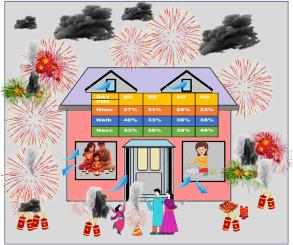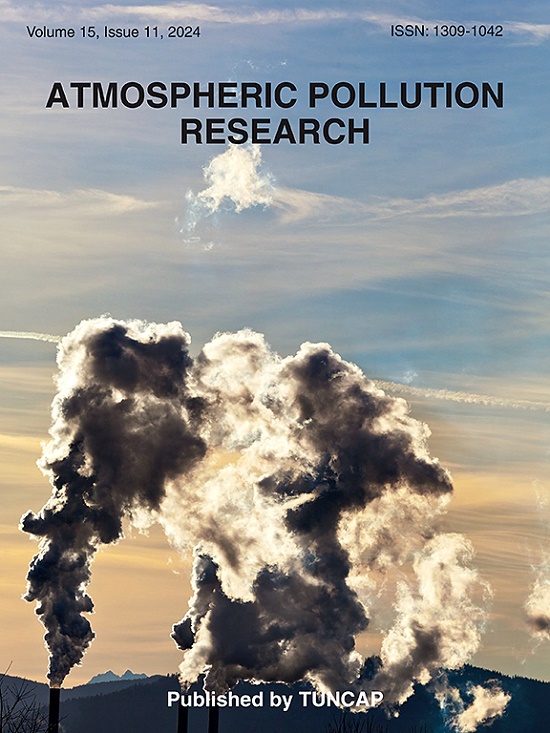Indoor ultrafine particle concentrations and their size distributions during festival-associated emissions in urban region
IF 3.5
3区 环境科学与生态学
Q2 ENVIRONMENTAL SCIENCES
引用次数: 0
Abstract
Indoor air quality is crucial for the well-being of residents, as people spend 80 % of their time indoors. This study investigated the impact of festival activities on household indoor air quality in megacity Delhi. The study included different phases and activities during the festival and normal conditions and analyzed the impact of different emission sources. During the festival period, the indoor ultrafine particle concentration was found to be 6.7 × 104 #cm−3, which was the highest observed indoor concentration throughout the study. The particle number concentration of the nanoparticles in indoor environment ranged from 104 to 105 #cm−3. Ultrafine size range particles contributed up to ∼85 % to the total particle numbers. Fireworks contributed to higher particle numbers in indoors, followed by cooking, dusting, and worshiping. The size distribution pattern of the particles emitted during cooking activities and fireworks was found to be different. Particle size range 10–30 nm contributed ∼31 % to total particle numbers on fireworks day, whereas on a normal day, it contributed only ∼13 %. During normal day, 100–1000 nm size particles contributed ∼50 % to total particle numbers. The diurnal pattern of the indoor environment was different from the outdoor. The outdoor fireworks activities also influenced indoor pollutants with respect to trace metals, which makes the indoor air quality more toxic, and affects the occupants' health.

城市地区节日排放期间室内超细颗粒物浓度及其粒径分布
室内空气质量对居民的健康至关重要,因为人们80%的时间都在室内度过。本研究调查了节日活动对大城市德里家庭室内空气质量的影响。研究包括节日期间的不同阶段和活动以及正常情况,并分析了不同排放源的影响。节日期间,室内超细颗粒物浓度为6.7 × 104 #cm−3,是整个研究期间室内观测到的最高浓度。室内环境中纳米颗粒的粒子数浓度范围为104 ~ 105 #cm−3。超细粒径范围内的颗粒占总颗粒数的85%。烟花导致室内颗粒物含量较高,其次是烹饪、除尘和祭祀。烹饪活动和燃放烟花爆竹产生的颗粒物大小分布规律不同。在烟花日,粒径范围为10-30 nm的颗粒占总颗粒数的31%,而在正常日子,它只占13%。在正常情况下,100 - 1000nm大小的颗粒占总颗粒数的50%。室内环境的日模式与室外环境不同。室外烟花活动还影响了室内微量金属污染物,使室内空气质量毒性更大,影响居住者的健康。
本文章由计算机程序翻译,如有差异,请以英文原文为准。
求助全文
约1分钟内获得全文
求助全文
来源期刊

Atmospheric Pollution Research
ENVIRONMENTAL SCIENCES-
CiteScore
8.30
自引率
6.70%
发文量
256
审稿时长
36 days
期刊介绍:
Atmospheric Pollution Research (APR) is an international journal designed for the publication of articles on air pollution. Papers should present novel experimental results, theory and modeling of air pollution on local, regional, or global scales. Areas covered are research on inorganic, organic, and persistent organic air pollutants, air quality monitoring, air quality management, atmospheric dispersion and transport, air-surface (soil, water, and vegetation) exchange of pollutants, dry and wet deposition, indoor air quality, exposure assessment, health effects, satellite measurements, natural emissions, atmospheric chemistry, greenhouse gases, and effects on climate change.
 求助内容:
求助内容: 应助结果提醒方式:
应助结果提醒方式:


